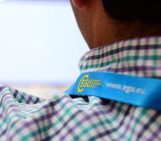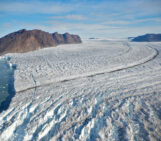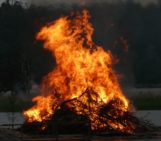
Thank you all for the great EGU General Assembly (GA) this year! In case you missed EGU24 or some of the events we organised, here is a little recap. So you can stop wondering how it went and get an idea of what to look out for next year.
In the Geodesy Divison, we had our kick-off, unlike the standard, with the online division meeting on Wednesday before the EGU24. There, we introduced our new members and new positions. We have a new co-rep, Marius, super happy to have him as our new ECS Co-Rep! We also have a new science policy officer Öykü*. We briefly introduced Geodesy division members, what we have been up to during the year and what we have planned for the EGU24. Did you like the online format?
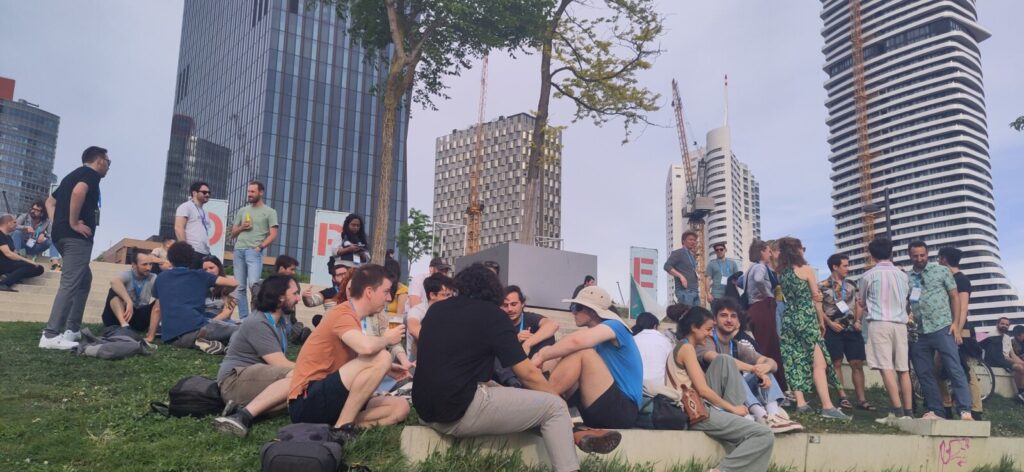
Pre-GA Icebreaker with G, GD and SM divisions at Copa Beach. Image courtesy: Barbara Jenny
In Vienna, we started the EGU24 week with the pre-icebreaker, which took place on Sunday, April 15th, where early career scientists from the Geodesy (G), Geodynamics (GD), and Seismology (SM) divisions gathered at CopaBeach, just a stone’s throw away from the conference venue, to kick off the EGU General Assembly in style. It was a fantastic opportunity for newcomers to the conference to mingle with fellow scientists from their own disciplines and beyond. We plan to continue this event every year, so we would love to see you there next year. Let your colleagues know, especially those new to EGU, as it builds a great foundation for a successful and fun week. Following the icebreaker, many attendees made their way to the EGU Opening Reception at the conference venue, marking the official start of the EGU24.

Discussions in a familiar atmosphere at the Geodesy Division networking event at terrace G at the General Assembly 2024. Image courtesy: Rebekka Steffen
The momentum continued on Monday morning with the Geodesy Fika, a social gathering held in the EGU networking zone. Geodesy Early Career Scientists convened at the terrace G (our usual spot 🙂) to enjoy a coffee break and connect with each other. It was a vibrant atmosphere, with discussions ranging from research interests to expectations for the General Assembly.

Short course Geodesy 101 attracted many interested scientists from all divisions that joined during their lunch break to learn more about Geodesy. Image courtesy: Öykü Koç
During the lunch break, the short course Geodesy 101, convened by Rebekka, attracted many researchers from all divisions, satisfying their hunger to get an overview of geodetic concepts ranging from GNSS and coordinate transformations to the analysis of gravity data. Have you thought about broadening your horizon across disciplines? The 101 short courses are offered by various divisions and can offer you easily understandable insights into many disciplines. If you are interested, we recommend you take the time to check them out at next year’s GA (EGU25).
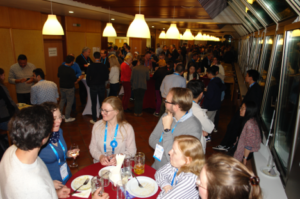
IAG reception; a great networking opportunity at the Federal Office of Metrology and Surveying of Austria on Wednesday evening. Image courtesy: Rebekka Steffen
For many years, the IAG (International Association of Geodesy) reception has been an amazing addition to the GA’s geodesy program. Co-organized by Martin from the GGOS office, the IAG reception offered a great networking opportunity at the Federal Office of Metrology and Surveying of Austria on Wednesday evening. In a familiar atmosphere, with drinks and food, the geodesy community came together to share experiences and make new connections.
A highlight of the week awaited us on Thursday evening with the geodesy division ECS award and Vening Meinesz medal lecture. If you missed it or want to enjoy it again, we recommend watching the recording! Jeffrey and Bramha gave amazing and entertaining lectures, so if you want to laugh a bit while learning more about what it was like having no reference frame back in the day, then have a look! You can watch it here by using your user login! But just a little warning, the room recording started a bit earlier than the lectures, so better if you start from 20:20 🙂.

Vening Meinesz Medal Lecture given by Jeffrey T. Freymueller at EGU General Assembly 2024 on ‘The Evolution of Positioning Accuracy and Linear vs. Non-linear Motions of the Earth’. Image courtesy: Holger Steffen
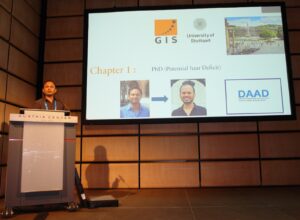
Bramha Dutt Vishwakarma giving the G Division Outstanding Early Career Scientist Award Lecture on ‘GRACE for Earth system science: novel insights into hydrology, sea level rise, and solid Earth uplift’ at EGU GA 2024. Image courtesy: Holger Steffen
These events, including this blog, are community efforts. Thank you very much to all of you who participated in these events making the EGU24 a special experience for all of us. We want to continuously improve these events for the community, and it is important for us to give you an opportunity to participate actively and to receive feedback from you; the community. So please let us know if you have feedback on past events or suggestions for future events. Did you like having a recap of what happened at the GA? Should we do this regularly every year? Let us know!
*If you have a policy point of contact, please send an email to g@egu.eu or oyku.koc@polimi.it


